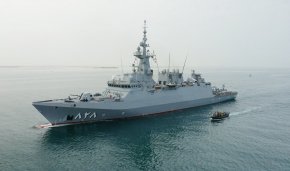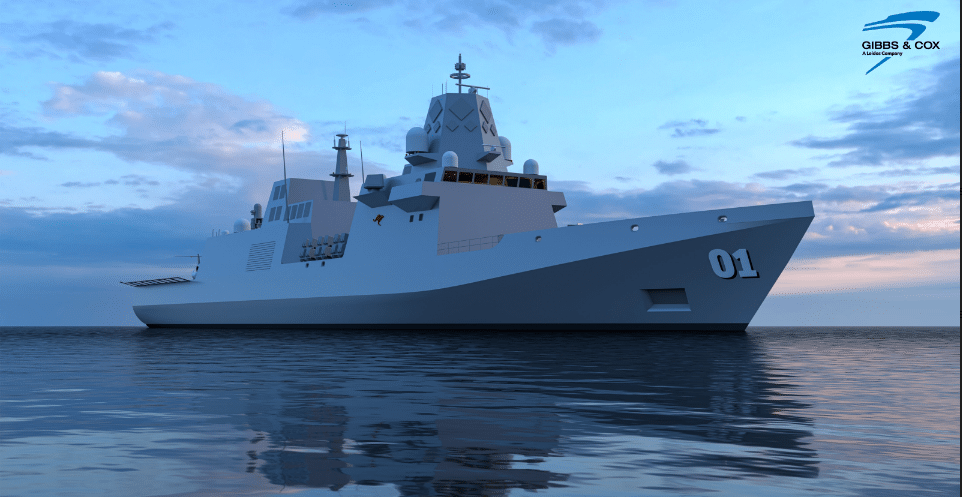If it’s asap, as in next year then the Tasman class gets the nod for 6 ships I reckon. (Eventhough crap range) 2 builders, we should get all 6 by 2030. Also Opens up future amphibious, frigate, destroyer, cruiser, JSS, RO etc etc navantia builds at Henderson.
Anything expected from 2030 we should go to g&c Aus light frigate or arrowhead.(aukus partners, supply chains, interoperability). Further builds could be DDGX destroyers, constellation class or larger ships from Babcock range.
If willing to build overseas and get closer with japan, Mogami batch 2 should be an option, on time and on budget pretty much a guarantee, could get 12 by mid 30s, much faster rate than any other builder, follow on ships can be destroyers (lengthened mogamis) with 85% + commonality.
both Henderson at Osborne appear to have 15-20 year builds currently and much more potential work seperate from tier 2 going forward.
Ummm... What?!
Why on Earth would you think that a Navantia concept ship could have six built by 2030? What sort of information and more important, what sort of assumptions are you making to come to that conclusion?
Right now, it appears to just be a concept ship, meaning none of the fitout has been set, or the detailed design work completed, and none of the long lead items have been ordered. Also no yard selected for the build (or even whether it would be a domestic or overseas build for that matter).
Depending on how much additional work to take the concept further towards a completed design Navantia has done, it is possible that Australia might be ready and willing to sign a contract to have the detailed design work done, if Navantia has the basic fitout at least close to something the RAN would find acceptable. From contracting to have detailed design work done, I would then expect it would be a minimum of six months and a year or more might be more accurate to accommodate Australian systems like CEAFAR, CEAMount and the Saab 9LV CMS. Once all the detailed design work is done, then contracts could likely be signed and orders placed. If Australia does commit to such a build, then I would expect Austal in Henderson to then commit to having a workforce appropriate for such a build. TBH I am rather dubious that Austal has the facilities and workforce in Henderson to support building a 3,600t steel monohull. It appears that much of the large warship construction Austal has done has been in Mobile AL in the US, and much of the other large work like commercial ferries is now done using aluminium by an Austal facility in the Philippines or Vietnam. In other words, Austal would likely need to make improvements to the current facilities in Henderson, or get access to other/shared facilities, as well as build up a qualified workforce. These are not things which can happen overnight.
It therefore looks to me like if the "Tasman" corvette were to be built, contract signing for such a build would likely not be earlier than mid-2024 and quite possibly later, like the start of 2025 or even perhaps mid-2025. If Austal has been working on getting their Henderson facilities and especially the workforce up to scratch ahead of time, in anticipation of there being contracts signed, then once the contracts are signed orders can get placed for long lead items as well as general materials. It might be possible for prototype work to have first steel cut sometime in 2025, particularly if the first steel deliveries can be made by then. From there, I would anticipate at least six months before first steel would be cut for the lead ship. This would likely happen sometime in late 2025 at the earliest, but could easily be well into 2026 or early 2027, particularly if it takes Austal time to build up/skill up the Henderson workforce. Looking at the timeline of the
ANZAC-class frigate construction, first steel for the lead ship was cut in March 1992, whilst the vessel was not actually laid down until 5 November 1993, with launch coming on 16 Sept 1994 and then commissioning into the RAN on 18 May 1996. I suspect that Austal would have either a similar duration timeline, or possibly an even longer one, given that the Williamstown facility which built the
ANZAC-class at the time had fairly recent frigate construction experience building the last two
Adelaide-class frigates for the RAN, with HMAS Newcastle having been launched on 21 Feb 1992, just before first steel was cut for HMAS Anzac.
I do not know what items would have long lead times, or just how long those lead times would be, but I would not consider it unreasonable to expect that at least some items ordered in early 2025 might not be ready until early 2027 or even later. It would of course depend on the item and how long it takes to manufacture, as well as how large the order book.
When all this starts getting put together in the sequence things would likely need to occur, then we might be looking at a launch date some time in 2028 with commissioning taking place 18-24 months later, for the lead ship. Subsequent vessels would likely then be commissioned at intervals, but this would be dependent on the capabilities and capacity of Austal's Henderson facility and workforce. The ASC facility in Osborne has been setup so that once the
Hunter-class build gets going, two vessels can be at varying stages of construction at any one time. Not sure if Austal's facility has provision for two hulls to be getting worked on simultaneously.
Optimistically, if Austal can manage to vessels under construction at once and there are not extra delays in terms of design work or materials delivered, it might be possible for a sixth vessel to be delivered some time in 2033 or 2035. However, if there are any issues with the design which would need to be sorted before construction could begin, or extra delays for long-lead items, then lead the "Tasman" corvette might not get commissioned until after HMAS Hunter.





